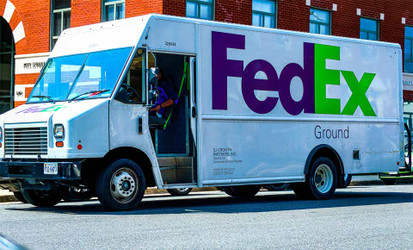How to Ship Car Parts
Posted by Joshlin Grayson on Jun 16th 2020
Shipping car parts is very different from sending a letter to your Grandma; they are often oddly shaped, heavy, and, depending on what you’re shipping, they can be quite large. What do you do when you need to ship an exhaust system? How you do ship a car door or a bumper? These items don’t exactly fit in a box, but still need to get to their destination. Dive in with us as we discover how to get your car parts to their destination with as little fuss as possible.
Freight or Parcel?
The first thing you want to do is assess the item that you need to ship. Something like an alternator or a water pump can very easily fit in a small box, but items like shock absorbers and exhaust systems may require a little more thought.
Check with your local shipping companies and see what their parcel limits are. Some parcel companies limit packages to 150lbs or less and will handle items up to a certain length or with. Each parcel company has its own policy on large and irregularly shaped items, so it’s important to ensure that your item can be shipped via parcel before preparing your item for shipment.
If your item is heavier than 150lbs, check to see if your parcel company also handles freight. If not, you may have to look into a local freight company that can properly accommodate your part and ensure that it arrives safely and undamaged.
How to Package Parcel Items
1) Prepare Item for Shipment
Wet boxes can easily fall apart, leading to potential damage to your item during the shipping process. If your part holds any type of fluids or lubricants, be sure to drain the part of any fluids to ensure that they do not leak into the box during shipping. Items like water pumps, oil pumps, and fluid reservoirs are perfect examples of how even residual fluids can compromise the integrity of the shipping box if fluid leaks out during shipment.
2) Use the Right Box
Just because an item can fit in a box, doesn’t mean its good to go. Each box is designed to hold a maximum amount of weight. Usually, these weight limits are printed on the box. Be sure that the box you use is designed to hold the weight of your part.
3) Pack it Correctly
Make sure you have enough protective material around your part to ensure that it doesn’t get damaged during transit. Unprotected sharp edges can puncture holes in your box and even cause damage to your part from being tossed around a lot. Be sure to pack your part in a way that it doesn’t knock up against other parts in the box, and ensure that it doesn’t shift too much during transit. This is especially important when you’re shipping fragile items that cannot be bent, like windshields and shock absorbers.
4) Seal it and Send it Off
Seal your package with pressure-sensitive, or 60-pound nylon enforced tape that is designed to hold under stress. Regular packaging tape or cheap dollar store tape may fail under pressure, but reinforced tape ensures that your package arrives at its destination safely.
How to Package Freight Items
1) Prepare Your Item for Shipment
An engine, a transmission, or a car door, won’t exactly ship in a box that you get from your local home improvement store, so it’ll have to be shipped on a pallet. Select a sturdy pallet that is free of broken boards and rotten wood.
2) Box or Crate Your Item
Seal your item in a box or place it in a crate. When shipping on a pallet, remember that the purpose of a box is not to hold the item, but rather to protect it from debris and damage during shipping. Be sure that your item is covered and protected with a box (if possible). If not, ensure that your item is crated protected. If you are shipping multiple boxes, be sure to stack them on the pallet so that they are close together so that they do not shift.
3) Wrap and Ship!
Once your item or items are safely on the pallet, be sure to wrap your entire shipment in shrink wrap or stretch wrap. This protects your items from moisture and also prevents them from shifting. As a last step, be sure to secure your shipment to your pallet with the proper straps to ensure they stay on the pallet during transit.
Shipping car parts can seem like a hassle, but with this helpful guide, it’s easy and straightforward. If you need classic car parts or classic truck parts don’t hesitate to check out our inventory of at Collectors Auto Supply and discover how we not only have all the parts your classic car needs, but we also ship them right too. Click here to get started on your order today.


